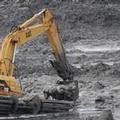 根據美國環保團體「自然資源保護協會」(NRDC)的最新研究分析顯示,全美54座規劃中的燃煤發電廠,每年將排放近1800萬噸的廢料及有毒金屬。
根據美國環保團體「自然資源保護協會」(NRDC)的最新研究分析顯示,全美54座規劃中的燃煤發電廠,每年將排放近1800萬噸的廢料及有毒金屬。
該協會也提出警告,目前營運中的發電廠,每年已製造出近1億3000萬噸的廢煤,而大部分廢料都被傾倒在大型且不受控管的垃圾掩埋場、水池或其他地點,將引發民眾健康和環境品質的危機。
2008年12月22日美國田納西河谷管理局經營的金士頓燃煤發電廠灰燼防護牆倒塌事件,導致約540萬立方碼的土塵飛散到400公頃的土地,進而引發大眾開始對廢煤的疑慮。金士頓燃煤發電廠位於愛莫里河的沃茲壩貯水池,鄰近克里奇河與田納西河的交界處。
此事件對許多住家造成損害,而到目前為止,田納西河谷管理局仍在與600戶以上的家庭,針對事件引發的問題、疑慮和財產損失賠償進行協調。
該會執行長萊納表示:「廢煤對人體健康和環境帶來極大但不必要的危機,我們必須在另一個金士頓災難來襲前有所行動。美國環保署雖然大刀闊斧宣佈將就煤灰污染進行規範,但仍需要儘快審查工廠處理廢煤的方式,確保所有新發電廠都受到適當的管理和控制。」
自然資源保護協會警告,灰燼是燃煤發電廠所製造的副產品,通常被貯存在封閉的區域,美國許多州允許業者將煤廢料傾倒在興建不良的垃圾掩埋場、水池和舊礦坑,廢料因此滲透到地下水。
被環保團體稱為「骯髒15」的15個州,是美國最大的污染者,共規劃了54座燃煤發電廠,預計將產生近1400萬噸的廢煤。
萊納指出:「其實還有其他更乾淨、更安全和更具永續性的能源,美國應該朝能源效率和可再生能源發展,除了復甦經濟,也能迎接21世紀所帶來的挑戰。」
在公佈最新研究分析的同時,自然資源保護協會也設立了一個新的網站,按州分類,針對現有及規劃中的發電廠,統計出每年廢煤和有毒金屬的排放總量。
Fifty-four coal-burning power plants on drawing boards across the United States would produce nearly 18 million tons of waste each year, including toxic metals, according to a new analysis by the nonprofit Natural Resources Defense Council.
Nearly 130 million tons of coal waste from existing plants already is being produced annually, most of which is disposed of in largely unregulated landfills, ponds and other locations, posing public health and environmental risks, the group warns.
Concern about coal waste arose after December 22, 2008, when a coal ash containment dike failed at the Tennessee Valley Authority’s Kingston Fossil Plant releasing about 5.4 million cubic yards of ashy sludge over nearly 400 acres. TVA’s Kingston Fossil Plant is located on the Emory River portion of Watts Bar Reservoir, close to where the Clinch and Tennessee Rivers meet near Kingston, Tennessee.
Several dozen homes were damaged, and the TVA has worked with more than 600 families so far on questions, concerns, and property damage claims. "Coal waste poses a large and unnecessary risk to people's health and the environment, and we need to act before another Kingston disaster strikes," said NRDC Executive Director Peter Lehner. "The EPA took a big step forward by announcing it will regulate coal ash, but they need to quickly examine how coal waste is handled and ensure proper management and disposal are in place at all new plants."
Ash, a by-product of coal-fired power plants, is often stored on-site in containment areas. Many states allow coal waste to be dumped into poorly constructed landfills, ponds and old mines from which it can seep into groundwater, the NRDC warns.
The 15 states that would be the biggest polluters, which the environmental group has dubbed the "Filthy 15," have proposals for 54 coal plants that would create nearly 14 million tons of coal waste.
"There are cleaner, safer and more sustainable energy choices available," said Lehner. "America should be moving toward energy efficiency and renewable energy sources that will drive our economic recovery and meet the challenges of the 21st Century."
In conjunction with the new analysis, NRDC has a new website that includes a state-by-state breakdown of the total amount annually of waste, including toxic metals, from existing and proposed plants.
Click here for NRDC's complete list of states and national data.


